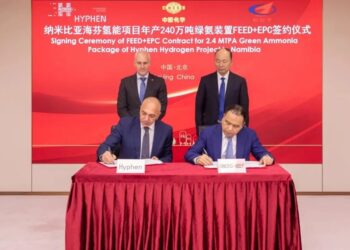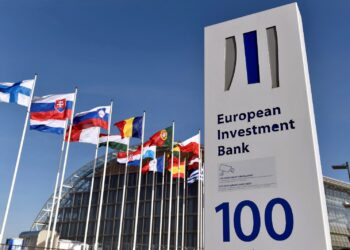
By Tio Nakasole
The origin and genealogies of green hydrogen gained unprecedented political and business momentum over the years.
Compared to previous waves of hydrogen hype in the 1970s, 1990s and the early 2000s, this time green hydrogen received much attention globally especially in developing countries.
With Namibia being a signatory to the Paris Agreement of UNFCCC, it is an enough evident that is not exemption from other member states. This is also simply to say that the use of hydrogen is not new except to those without a chemistry background it may appear as a vocabulary.
Firstly, laying down the green hydrogen carpet of meanings and relevance in Namibia on this submission, is quite instrumental in presupposing in demystifying the concepts so that no one feel locked outside in digesting this piece’s motive.
Hydrogen known as an abundant element in the universe, gaseous form and transparent in colour, is denoted as green or clean when separation of water into hydrogen and oxygen atom take place chemically. Is only produced when powered by renewable energy sources such as wind or solar which are found along the coastal area in this instance Kharas, Erongo, and Kunene region.
Namibia can benefit from hydrogen via electrification of sector such as steel, cement, aluminium production and in feedstock to produce fertilisers, plastics and refining, in tandem contributing to the SDG 7 decarbonisation of many challenging sectors such as transport, industry and natural gas’s infrastructure.
However, given the energy scarcity for the growing population and climate change, in recent years there has been energy entanglement and interest in one of the hydrogen types which is green hydrogen, both locally and globally.
At the onset, several African countries including Kenya, Morrocco, South Africa, Egypt and Nigeria are at various stage of integrating green hydrogen into their energy mixes.
According to an Intergovernmental Panel on Climate Change report highlights that part of the populations of Africa and Asia, struggles with poverty, and will be disproportionately affected by global warming. With much at stake, Africa accounted for 3.7% of global greenhouse gas emission, which is almost equalled by the greenhouse gas emissions from just the international aviation and shipping industry.
The same report confirmed that 50% of those are without access to electricity live in country such as Nigeria, DR Congo, Ethiopia, Tanzania and Uganda. Subsequently, such setbacks of access to modern energy will not only lock outside the business activities and economic development and increases pollution but will also increase gender inequalities in society, which will prevent many women from taking up business activities. Such polarisation can diminish domestic activities, especially for the MSMEs which are the backbones of developing countries.
Namibia as the land of the brave, like any other, with abundant world-class renewable energy source (solar, wind), sea and open space, there is no shame in harnessing its green hydrogen potential. Despite the high hope and hype coming from the public with different perception, it is crucial to understand the burgeoning interest first of Namibia in renewable energy, which is dated back in its long-term Vision 2030.
The Namibian vision 2030 is the mother policy which catapult the birth of other national policy documents such as National Development Plan, Harambee Prosperity Plan, National Energy Policy and lastly Green Hydrogen and Derivatives Strategy. This is brought forth on this analysis to sanitize the misconception on energy trilemma and policy infringement and implementation attack, to indicate that the green hydrogen development recently underway is not a “castle build in the air†overnight, but there has been an overarching alignment of policies and strategies since 2004.
However, as it has been said that development is a process, and the process may take time, as the saying goes “almost doesn’t countâ€. Mathematically, it has taken twenty-one years to come to the realisation of one sub goal of Vision 2030 among others since its inception in 2004, to come to its fruition. In a nutshell, it is also an indication that trail of developmental project elasticity continue to swim at a lower pace against the tide of nation’s demand, which can be very detrimental to the country’s economic growth if ignored.
With the Namibian economy projected to expand by roughly 4.0%, green hydrogen project has the potential to make great stride on the remaining long-term vision of the country. Despite the good news and GDP growth it may bring, there are so many hurdles that the country still faces: unemployment, unabated corruption, inequality, low productivity, crawling of value chain and lack of value addition, poverty, access to electricity, modern infrastructure in terms of hydrogen transportation and fluctuation in terms of trade and exchange rate due to global external shock.
The question is how preparedness are we, how deep have we tested the depth of water in addressing and hedging against the risk of missing our development partners and end user of our hydrogen derivatives in terms of assurance about our mega project which is still at its infancy stage? It is against the aforesaid upon which societal consideration should be stemmed from, to restore the positive public perception, private and investor’s trust.Â
It is each and everyone’s hope that once all those boxes are ticked the quality of life of the people and the wellbeing of the Namibian economy will improve toward their counter part level in the developed world by 2030.Â
Lastly, challenges facing Namibia and Africa in energy sector is not a gimmick, and if not addressed can become an undeclared pandemic. Hence require a synchronised effort of green energy investment across nations. Therefore, with green hydrogen stance for Namibia should be an apt choice, hence going green should be now or never.
*Tio Nakasole is an Economics Honors degree holder, MBA student, and a Research Analyst at MONASA Advisory and Associates. The views expressed do not represent those of his employer. – theoerastus@gmail.com










